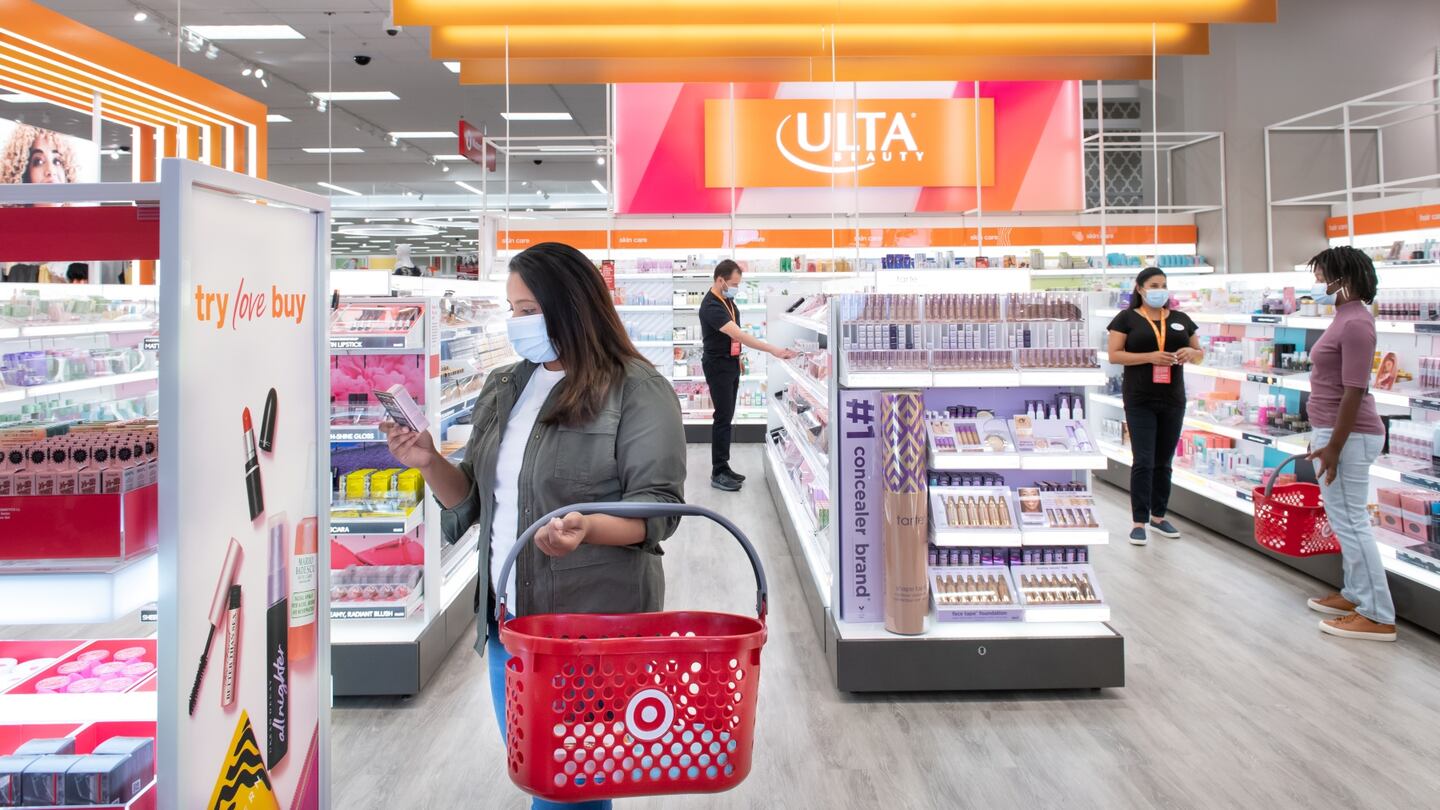
The Business of Fashion
Agenda-setting intelligence, analysis and advice for the global fashion community.

Agenda-setting intelligence, analysis and advice for the global fashion community.

My first “prestige” beauty experience happened at a department store in the mid-1990s. My mom took me to the Clinique counter to get that moisturiser in the yellow bottle (everyone who is a Millennial and older knows what I’m talking about). When I graduated from college, I went to Saks and bought Bobbi Brown foundation and a “shimmer brick” highlighter I had no idea how to use. In high school, a Chanel eyeshadow quad from Macy’s was a prized possession.
Today, it wouldn’t cross my mind to enter a department store to buy makeup or skin care. Sephora and Ulta Beauty are now the go-to destinations for beauty purchases, with thousands of US locations and exclusive arrangements to carry the most desirable brands.
But we may be seeing history repeat itself. Big box retailers like Target and Walmart realised they had an opportunity; they too have thousands of stores, each with endless aisles that could be the perfect place to discover new products. Drugstores want a piece, too: CVS recently announced its “Skin Care Center” concept, where cheap brands like Cerave would sit alongside pricier lines typically associated with Sephora or Net-a-Porter, including Wander Beauty.
Now, Target, Walmart and CVS are vying for a piece of Ulta and Sephora’s market share, even as Saks, Bloomingdale’s and Nordstrom pour money into renovating their beauty floors. Is there enough room for everyone?
ADVERTISEMENT
In beauty, it all comes down to where discovery actually takes place. Sephora used to have a lock on discovery, as its decision to carry a previously unknown line instantly conveyed legitimacy. Only insiders knew about Drunk Elephant when it entered Sephora in 2015; soon, customers were happy to drop close to $100 on one of the brand’s serums.
Once they got the Sephora bump, new brands trickled down to Ulta and then into the wider market years later. They rarely reached big box retailers and drugstores, which in the eyes of consumers were for replenishment of staples like Dove soap or Pantene shampoo.
It’s a different world now. People discover products via social media and their peers. Where they actually buy those products doesn’t matter as much — it could be on a trip to Sephora or a CVS run. Big box retailers and drugstores want to take advantage of that.
The democratisation of beauty — the mixing of high and low-priced items and the dispelling of the mindset that expensive means “better” — made brands more willing to widen their distribution to mass channels. The evolution of where we buy beauty, from department stores to speciality retail, took decades. But the shift to big box retail, and potentially, drugstores, is happening much faster.
Target has made the biggest inroads so far, after the “Ulta-fication” of its beauty aisles in 2019, designed to make shoppers feel like they were in a beauty speciality store inside a big box store. Ulta itself opened about 100 Target shop-in-shops last year with plans to open around 250 more in 2022. Target spent years attracting start-ups and direct-to-consumer lines like Harry’s, Quip and Native’s deodorant to differentiate its beauty offerings from competitors.
Last year, Walmart introduced about 100 new beauty brands under the stewardship of then vice president and general manager of beauty, Musab Balbale. Balbale left Walmart early this year to join CVS as its chief merchant. In its effort to become a beauty destination, CVS is bringing in labels you wouldn’t traditionally find (or buy) at a drugstore.
In this new, democratised market, each store has its strong suit: Sephora is still trusted as a beauty leader and trend maker with exclusive brands. Walmart plays the volume game: it is the biggest retailer in the world, with about half of the US population visiting at least weekly. Target falls somewhere in between – it’s where you go to buy toilet paper and milk, but is seen by many shoppers as a place to discover exciting new products.
CVS is the wild card: they are everywhere (almost 10,000 US locations, five times the number of Target stores). But consumers pop in to buy things they need and don’t typically linger to see what else is on the shelves. The company’s new strategy boils down to: “You thought you just needed toothpaste, but what about this millennial pink, dual-ended blush and highlighter stick from Wander Beauty?” Its hurdle is convincing shoppers to buy $40 beauty products along with that $4 tube of toothpaste.
For me, in 2022, what I’m buying always trumps where I’m buying it. As long as Target, CVS or Sephora sell exactly what I’m looking for (I’m particular), it doesn’t matter where it comes from. It feels perfectly normal to buy a Too Faced “Better Than Sex” mascara while grabbing Saltines and Advil at Target. I would even buy it from a vending machine in the subway if the opportunity presented itself.
 Opens in new window
Opens in new windowDemand for the drugs has proven insatiable. Shortages have left patients already on the medications searching for their next dose and stymied new starters.
The company reported a long-awaited lift in net sales in its third quarter results, with increases from skincare leading the way, but clouds persist over its China recovery.
As awareness grows about the perils of sleep deprivation, beauty and wellness brands are flooding the market with an array of products to cash in on the booming opportunity.
Going public is usually a pivotal moment in a company’s history, cementing its heavyweight status and setting it up for expansion. In L’Occitane’s case, delisting might be a bigger conduit for growth.